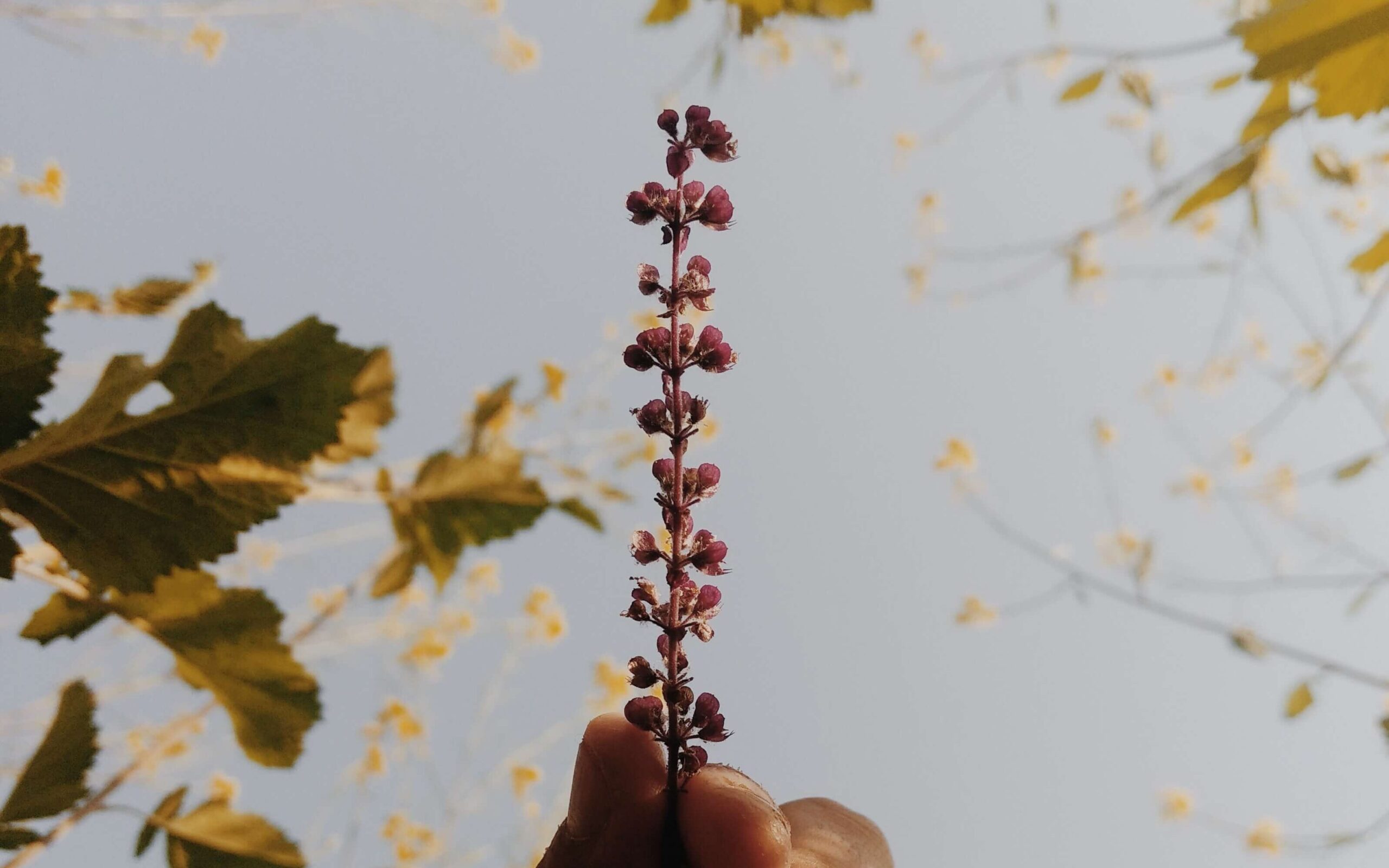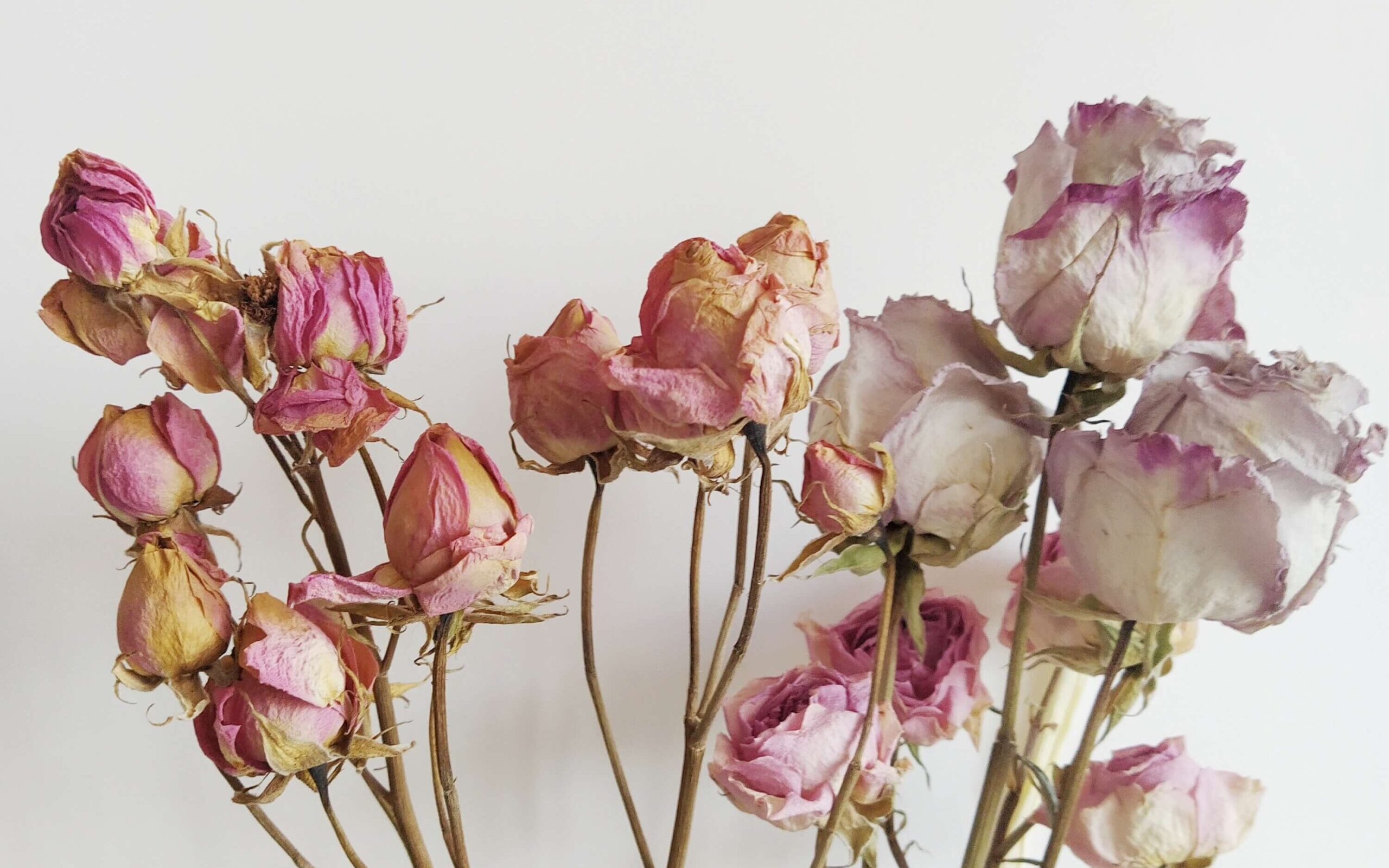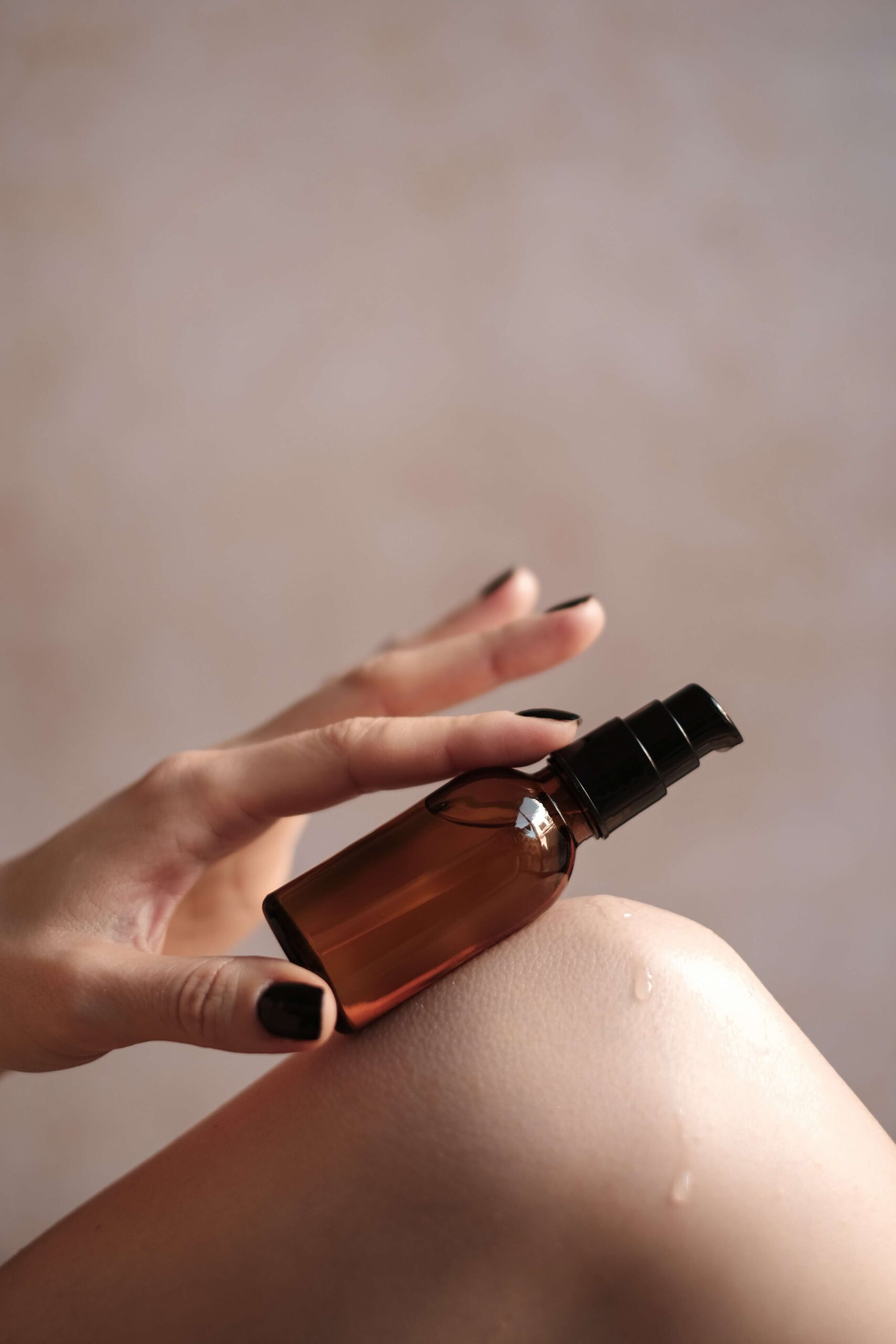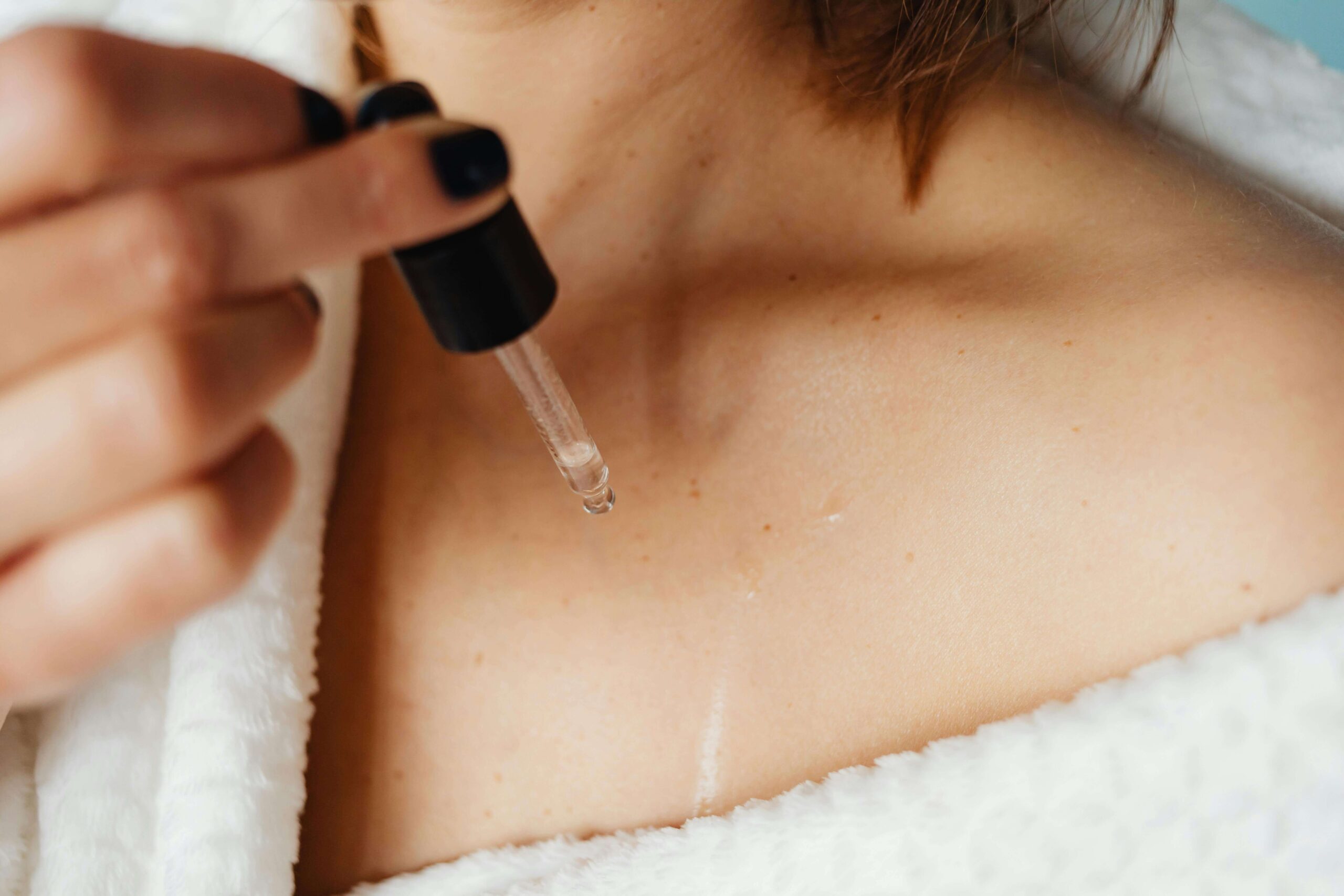Rosacea is a frustrating and chronic skin condition that consists of various levels of inflammation and redness throughout the complexion and can often be confused with acne. Because treatments for rosacea and acne differ tremendously, it is important to be able to decipher rosacea symptoms from acne to heal the skin. Today we are exploring the skin condition of rosacea and a multitude of natural approaches in how to treat rosacea so let’s dive in
Skin is known to have more than 1 mysterious condition that manifests without being able to pinpoint why, as the reasons will differ for each of us and rosacea is one of them. Rosacea does however have a noticeable rate of hereditary predisposition, can be triggered through both internal and external environmental factors and is usually found in individuals with lighter hair, blond eyes and a Scandinavian/Northern European heritage, although it can be found in other heritages as well.
How To Treat Rosacea Naturally
First let’s take a look at the 4 Sub-Types of Rosacea:
- Redness/ruddiness of skin, flushing/blushing easily, blood vessels and broken capillaries/telantectangia starts to appear. This subtype is what gives insight to the individual being able to distinguish between rosacea and acne. When inquiring with clients around rosacea, I ask if they get red and flush easily from a glass of wine or acute stressful situations, say driving for example. The immediate flush is a sign of rosacea. Skin also tends to be sensitive to touch, sunlight and blushing can cause major heat to rise throughout the face and chest area. (also known as vascular rosacea)
- Bumps, papules, pustules and consistent redness prone to the blushing areas of the cheeks but can still appear anywhere on the face.
- Skin thickening, usually starting around nose.
- Eye irritation, such as cysts or grittiness feeling of the eyes also known as ocular rosacea.
Other ways to differentiate rosacea from acne (although rosacea and acne can co-exist) is that rosacea usually shows up after the age of 30, there are not many, if any, blackheads present and skin may swell in blushing. acute stress situations and have a hard time returning back to normal. This results from fluid build up in the area due to the stress put on the lymphatic system of the face via damaged capillaries.
Demodex mites, found normally in skin and hair, may appear in larger amounts throughout Rosacea skin. This causes a high inflammatory response in the skin and the bacteria can multiply from known rosacea triggers that include excess sun exposure, heat, stress, steam and humidity. Read more on demodex and Rosacea studies here.
Lymphatic System and Rosacea
The capillaries and blood vessel system of the face are closely intertwined with the lymphatic system. Capillaries enable exchange of water and chemicals between blood and tissue. When these blood vessels become stressed, through blushing, stress and triggers, they tear.
The lymphatic system then becomes overwhelmed and cannot properly detox the over abundance of proteins, water and metabolic waste carried by the blood that has seeped in from the broken capillaries. It is critical for rosacea skin conditions to avoid triggers such as red wine, inflammatory foods, extreme stress, inflammatory skin care products and anything that may in particular inflame skin.
Appearance of Rosacea
Individuals experiencing rosacea will notice when skin does return back to normal from fluid retention in these circumstances, they may be left with more noticeable telectangasia, which are broken capillaries that form in clusters that are red, thread like spots left on the skin that result from loss of elasticity of capillary walls. When capillary walls tear, they no longer retract and are left permanently dilated and the blood that seeps out is what leaves red spots known as broken capillaries, or couperose, visible on the skin.
Rosacea inflammation can also reflect as cystic, “bumpy” and under the skin congestion. These types of breakouts are not advised to be extracted. This creates more inflammation and the surrounding skin is often already inflamed.
Breakouts associated with rosacea can be painful and the best way to treat them is through anti-inflammatory and soothing practices instead of steam, exfoliation and extractions that are often performed in conventional acne treatments.
Although rosacea skin tends to be dry and tight, pustules can still occur. Use extreme caution around any sort of drainage extraction techniques.

Rosacea Triggers
Products that include stripping, drying ingredients, astringents, hydroxy acids, scrubs etc. are exceptionally harsh for rosacea skin conditions. These ingredients perpetuate the inflammatory cycle of rosacea further and rosacea skin types should eliminate.
Allopathic medical treatments for rosacea that include steroids and other topical treatments often times perpetuate the chronic skin condition of inflammation further. This eventually leads to immunity of conventional treatments and in no way addresses the root of why manifestations of rosacea are appearing on the skin.
Cleansers that leave the skin tight and dry afterwards deeply disrupt the skins microbiome and further increase inflammation. Learn about the delicate balance of the skin microbiome and disruptions that the chronic use of aggressive products can cause and begin eliminating these products. Other rosacea triggers to avoid include but are not limited to:
Stress
Over cleansing/stripping cleansers/gel and foaming cleansers
Scrubbing skin/aggressive exfoliators
AHA’s such as Ggycolic acid and BHA’s such as salicylic acid
Prescription exfoliators such as retinoids
OTC retinol and retinoids in general
Prescription steroids
Most all essential oils and especially anything with tea tree oil, rosemary, menthols, peppermints
Products containing witch-hazel, alcohol, and anything citrus based
Inflammatory diets (excess gluten, sugar, dairy, coffee, alcohol, red meats)
Spicy foods
Alcoholic beverages
Wind exposure/hot weather/sunburn
Steam rooms and saunas
Best Natural Skin Care Practices for Rosacea
Rosacea treatments are most effective with a holistic approach to mind, body and skin. Both stress and diet are massive factors in either causing or eliminating flare-ups. By understanding what triggers your own flare-ups, you are able to deeply address the root of skin flare-ups instead of suppressing them through conventional treatments, which causes flare-ups to resurface with a vengeance when they do return.
When shifting to a more natural approach to treat rosacea, opt for soothing and nourishing skincare practices and ingredients such as gentle cleansers, cooling hydrators, and light oils that will not hold inflammation into the skin and suffocate the skin.
Tools such as gua sha and jade roller gemstones can cool the skin and assist in lymphatic drainage. Gemstones are cool to the touch may be lightly placed over areas of inflammation for their cooling properties and lymphatic support.
All forms of touch and massage through tools or hands for rosacea should always be techniques yielded for lymphatic drainage only. Avoid deep massage, rubbing, gliding and other traditional massage methods around rosacea and highly sensitive skin.

Best Ingredients for Rosacea
Rose, Chamomile and Calendula Compresses. 3 soothing herbs to help calm and cool inflamed skin that you can use as an herbal home remedy for rosacea. Steep loose herbs or tea bags of the above ingredients and once tea has cooled in the fridge, create a compress with muslin cloth or organic cotton and apply to skin. Because rosacea is a skin condition that can actually feel hot to the touch, cool compresses work exceptionally well in cooling the skin down and are highly recommend in soothing rosacea skin.
Aloe. Aloe. A simple aloe gel mask can quickly soothe rosacea skin and it is simple and easy to use.
Rosewater. Head to local health food store and snag an organic rosewater. You can use this as your daily facial toner, mist your skin when needing a quick cool down or soak organic cotton pads and use as a cooling compress over your skin. Rose is my absolute favorite skincare ingredient for anyone and everyone.
Is Hyaluronic Acid Good for Rosacea?
This is a common question amongst skin care product inquires and yes, it can be a nourishing ingredient for rosacea skin types, as it is conditioning and hydrating to the skin. The key is seeking out a high quality hyaluronic acid formulation such as Indie Lee’s Co-Q10 Facial Toner. The ingredients are soothing, alcohol free and the combination of aloe, cucumber, chamomile and hyaluronic acid create a nourishing facial toner for rosacea skin conditions.
Best Skin Care Products for Rosacea
Cleansers
Rosacea product routines will differ for each of us but if I was going to recommend a universal product routine, I would keep it soothing and nourishing with a deep focus on skin microbiome support. I’d check out cleansers such as this Simple Cleansing Oil or the holy grail Marie Veronique Essential Oil Free Oil Cleanser, a number one seller amongst my facial clients and then follow with a soothing, non-exfoliating and alcohol free toner such as Hypotonic, Co-Q10 Toner or this Hydrating Elixir.
Serum
After cleansing and toning, opt for a soothing water based serum such as this Marie Veronique Soothing B3 Serum.
Facial Oil
Follow by sealing in your serum and moisturizing skin with an organic, light facial oil such as Laurel Essential Lipids, which is a unique product for sensitive skin that I highly recommend to my rosacea facial clients. It is essential oil free, takes the place of a serum and face oil, combining the use of each into 1 product. And is very light on the skin, preventing inflammation from being held in the skin, which can happen with heavier and more dense oils.
Josh Rosebrook Herbal Infusion Oil, another classic I’ve used for years in my facial practice, even the most sensitive skin types respond well to this formulation. Definitely a nourishing facial oil option for rosacea skin concerns.
SPF
When applying SPF, opt for natural options such as Suntegrity. Always look for mineral based sunscreens that are zinc oxide or titanium oxide based no matter your skin type. These are what you want for your face, body and the whole family if you have littles.
Treatment mask
Last but not least, be sure to give your skin some extra TLC with a nourishing weekly skin treatment mask. Hands down and products I worked with for years in my facials, Laurel Skin formulates the most decadent, healing and skin nourishing facial masks!
Laurel Skin creates masks with the intention of ritual and they deliver. Highly recommend their Gentle Hydrating Recovery Mask for rosacea or any sensitive skin types.
Their Almond Rose Exfoliant is an actual game changer. The marshmallow root alone in this product is of such quality that I would literally see changes in the skin tissue when using this on clients due to the mucilage properties of the marshmallow root and the way it innately hydrates skin tissue. These are both masks you mix with water, which is lovely as the botanicals become active when mixed w water. If you don’t want to mix your own mask, opt for their Honey Berry Mask.
Especially for rosacea and any sensitive skin types, less is truly more. Keep it quality over quantity.
Diet
Opt for a diet rich in cooling foods, nutrient dense foods, green leafy vegetables, almonds, healthy proteins such as quinoa, white meat, salmon, omega rich foods, etc. If you are ready to get serious in the treatment of rosacea, an anti-inflammatory diet that avoids excess dairy, sugar, gluten, coffee, alcohol, processed foods/chemicals, red meat and fried foods is vital.
Food journal and try an elimination diet. Cut out all potential triggers listed above and evaluate skin after 3 weeks. As you slowly add each individual food back into your diet separately, record how you feel and any noticeable skin triggers so you can discover what causes skin to flare-up and eliminate that root cause.
Gut Health. Small intestine Bacteria Overgrowth (SIBO) is common in people with rosacea. A quality probiotic will work to restore gut flora and nourish the gut. Be sure to shop for a high quality and potent product such as Mary Ruth Organics or SEED Probiotics, some of the most science backed and superior probiotics on the market.

Coffee and Alcohol
Cut down on coffee consumption of more than 1 cup a day and/or opt for tea. The caffeine in coffee is more stimulating than tea, which can create irregular blood sugar levels and leave us with sugar cravings, blood sugar spikes and potential skin inflammations.
The caffeine in tea exists but tea contains other beneficial constituents that help ease caffeine absorption into your system, avoiding the highs and lows found with drinking coffee. Green Tea has an abundant source of anti-oxidant and anti-inflammatory properties that are beneficial for the skin and digestion too.
A massive trigger in almost 100% of Rosacea clients is alcohol. Alcohol is one of the top ways to differentiate rosacea from acne. If complexion and/or chest becomes flushed, blushed, red or inflamed, even after just a small amount of alcohol, there is usually a type of rosacea present. Alcohol is one of the number one triggers to avoid when healing rosacea skin.
Stress Management
Zen Inducing Workouts. Try workouts like pilates, yoga, walking, balanced cardio sessions and more yin style movements practices. This relieves stress and gets in your daily dose of movement without flushing or over-heating the skin.
Meditation and breathing exercises also help to manage daily stress, induce healthy circulation throughout the body and support skin through the governing lung meridian, as the lungs govern the skin in Chinese Medicine. Incorporate meditation into every lifestyle for the endless, life improving benefits for mind, body and skin.
There is so much conflicting information out there and I know how frustrating skin conditions can be. I’ve seen my approach work many times over for clients and I hope it helps if you are experiencing rosacea.



